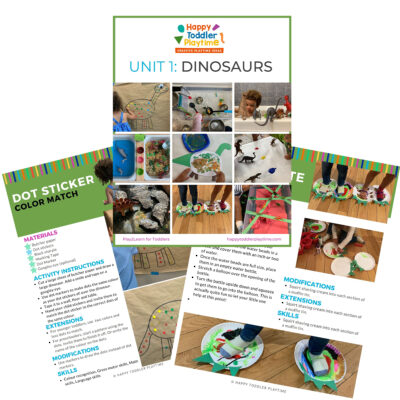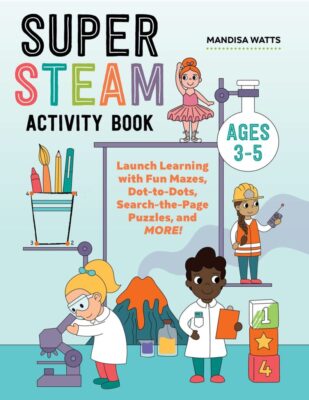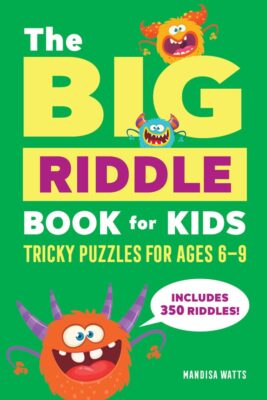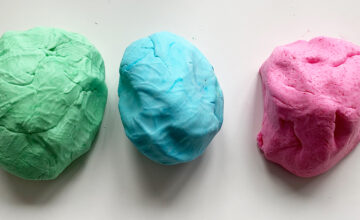
Easter brings with it a palette of vibrant colors, joyful activities, and the perfect opportunity for sensory play that engages little ones in the celebration. Among the plethora of Easter-themed crafts and activities, creating an Easter egg sensory bag offers a mess-free, fascinating, and educational experience for babies and toddlers alike. This simple yet effective activity can be assembled with just a few materials and provides a delightful sensory experience. It’s not only about the bright colors and the feel of the eggs moving through water but also about the exploration of cause and effect, fine motor skills, and even early math concepts for older children.
Activity Overview
- Age Suitability: This craft is good for babies aged 6 months old and up to 4 years old with adult assistance.
- Mess Level: The mess level for this activity is low.
- Difficulty to Create: Low.

Materials Needed
- Foam mini Easter eggs
- Plastic ziplock bag (gallon size)
- Water
- Duct tape
- Surface to tape it to (such as the top of a sensory bin or storage container)
- Alcohol wipe
How to Make An Easter Egg Sensory Bin
- Prepare the Bag: Start by using an alcohol wipe to remove any labels or residue from the ziplock bag. This ensures that your sensory bag is clear and free from distractions.

- Fill the Bag: Add the mini foam Easter eggs into the bag. Pour in enough water to allow the eggs to move freely when the bag is sealed.



- Seal and Secure: Seal the bag tightly, pressing out as much air as possible to prevent any excess bulge. Use duct tape to securely attach the bag to your chosen surface, such as the lid of a sensory bin or a sturdy storage container. Make sure to tape the top of the bag as well to prevent any water from escaping.


- Enhance for Older Kids: For preschoolers, you can draw colored Easter eggs or Easter baskets on the outside of the bag with a permanent marker or Posca paint markers. Invite your child to sort the foam eggs by color, matching them to the drawn eggs, adding a layer of cognitive challenge to the activity.



How They Played
- Babies: My youngest was mesmerized by the floating colors and the gentle movement of the eggs within the bag. The cool water and shifting shapes provided a calming sensory experience, perfect for tummy time.
- Toddlers: My toddler enjoyed pressing and squishing the bag, giggling at the way the eggs moved and bumped into each other. It was a fantastic way for them to explore cause and effect.
- Preschoolers: After adding drawn eggs on the bag, my preschooler was challenged to match the foam eggs to the corresponding colors drawn on the bag. This added an exciting twist of sorting and color recognition to their play.

Tips for Success
- Choosing foam Easter eggs is essential as they are lightweight and float easily, making them ideal for this sensory activity.
- Ensure the bag is securely sealed with duct tape to prevent any leaks and to keep little hands from opening the bag.
Skills Learned
- Sensory Exploration: Engaging with different textures and the visual stimulation of colors.
- Fine Motor Skills: Manipulating the bag and the items inside it strengthens hand-eye coordination.
- Cognitive Development: For older children, sorting and matching activities enhance cognitive skills like color recognition and problem-solving.
- Emotional Regulation: The sensory bag can also serve as a calming tool, providing a focus point for children who need a moment to regulate their emotions.
This Easter egg sensory bag not only celebrates the season but also taps into the innate curiosity of children, making it an excellent addition to your Easter activities. It’s a wonderful way to bring the essence of Easter into your home or classroom, providing a multi-sensory experience that is both educational and entertaining.
Play2Learn Toddler & Preschool Programs for Curious Toddlers

There is no limit to your toddler’s energy and curiosity. That energy and curiosity although a joy can be challenging at times. Their interest in just about everything around them is what makes them great learners. One and two year olds can soak up so much just from their senses!
But as a teacher or parent that thirst for learning can be exhausting. That is why I created this toddler and preschooler program. To help you get the most out of this time with your curious toddler without having to come up with creative ways to play and interact with them.
Play2Learn for Toddlers includes 20 Units for toddlers. Each 2-week toddler unit has 20 super easy to set up and engaging activities for toddlers 18 months to 3 years.
Play2Learn Preschool which includes 20 Units for preschoolers. Each 2-week preschoolers unit has 20 unique and easy to set up and engaging activities for preschoolers 3 years to 5 years. That’s over 800 learning activities for your toddler and preschooler at your fingertips! So many ideas you and your child will never be bored again!
These toddler and preschool lesson plans and activities will definitely keep you and your toddler and preschooler busy playing and learning!
Click here for more information: Play2Learn
Book: Exciting Sensory Bins for Curious Kids

Did you know I wrote a book of sensory bins? Click here for more information Exciting Sensory Bin for Curious Kids. Or grab your copy at Amazon.
Boring afternoons are made exciting with awesome animal-based bins, like Salty Shark Bay or Yarn Farm. Pretend play bins like Birthday Cake Sensory Play or Bubble Tea Party encourage creativity and imagination. And your kids will have so much fun they won’t even know they’re getting smarter with STEAM (science, technology, engineering, art and math) activities like Sink or Float Soup, Magnetic Letter Hunt or Ice Cream Scoop and Count.
Designed for toddlers 18 months and up.
Book: Super STEAM Activity Book for Kids

Learning all about science, technology, engineering, art, and math sets kids up for scholastic success―and it can be so much fun! Watch kids enjoy building STEAM skills as they color friendly fish, help water find its way to tree roots, solve math problems with mazes, and more.
Find out more and grab your copy here.
Designed for preschoolers 3 years old and up.
Book: Big Book of Riddles for Kids

Riddle me this: What’s an exciting way to practice critical thinking while having a blast? The Big Riddle Book for Kids, of course! From hilarious puns to tough brain teasers, kids can build problem-solving skills with hundreds of riddles tha. t show them how to think outside the box.
- 350 riddles for kids—Have hours of fun with riddles, puns and jokes, and math and logic puzzles that’ll get their wheels turning!
- Level up their skills—Riddles get trickier as kids progress through the book, challenging them as they get better at solving puzzles!
- Double-check their work—Kids can check their answers in the back of the book with a handy answer key.
Help children expand their minds while having fun with this puzzle book for kids!
Designed for kids ages 6 years old and up.
TV Show: Curious Crafting
I’m so excited to share my crafting TV show Curious Crafting which launched in July 2022 on TVOkids and TVOkids YouTube! Season 2 aired in August 2023! My show was also nominated in 2023 for Best Live Action Preschool Series by the Youth Media Alliance Awards of Excellence.
Curious Crafting Season 1 is also now airing in Australia on ABC! Watch it here!
Set in the ultimate crafting space, Curious Crafting is a short form pre-school age series about the joy of making crafts. I lead a rotating cast of adorable little preschoolers (including my own) making magic out of common household objects.
In each episode we transform recycled items into magical crafts like a milk carton school bus, paper bag puppet or cotton pad turtle. The crafters learn and laugh their way through each activity while demonstrating what their young imaginations can create.
Curious Crafting shares the adventure and joy of making art with takeaway lessons for creating crafts at home.
This show designed for toddlers and preschoolers 2.5 years old and up.

Easter Egg Sensory Bag Summary
Materials
- Foam mini Easter eggs (available at dollar stores)
- Plastic ziplock bag (gallon size)
- Water
- Duct tape
- Surface to tape it to (such as the top of a sensory bin or storage container)
- Alcohol wipe
Instructions
- Prepare the Bag: Start by using an alcohol wipe to remove any labels or residue from the ziplock bag. This ensures that your sensory bag is clear and free from distractions.
- Fill the Bag: Add the mini foam Easter eggs into the bag. Pour in enough water to allow the eggs to move freely when the bag is sealed.
- Seal and Secure: Seal the bag tightly, pressing out as much air as possible to prevent any excess bulge. Use duct tape to securely attach the bag to your chosen surface, such as the lid of a sensory bin or a sturdy storage container. Make sure to tape the top of the bag as well to prevent any water from escaping.
- Enhance for Older Kids: For preschoolers, you can draw colored Easter eggs or Easter baskets on the outside of the bag with a permanent marker or Posca paint markers. Invite your child to sort the foam eggs by color, matching them to the drawn eggs, adding a layer of cognitive challenge to the activity.





